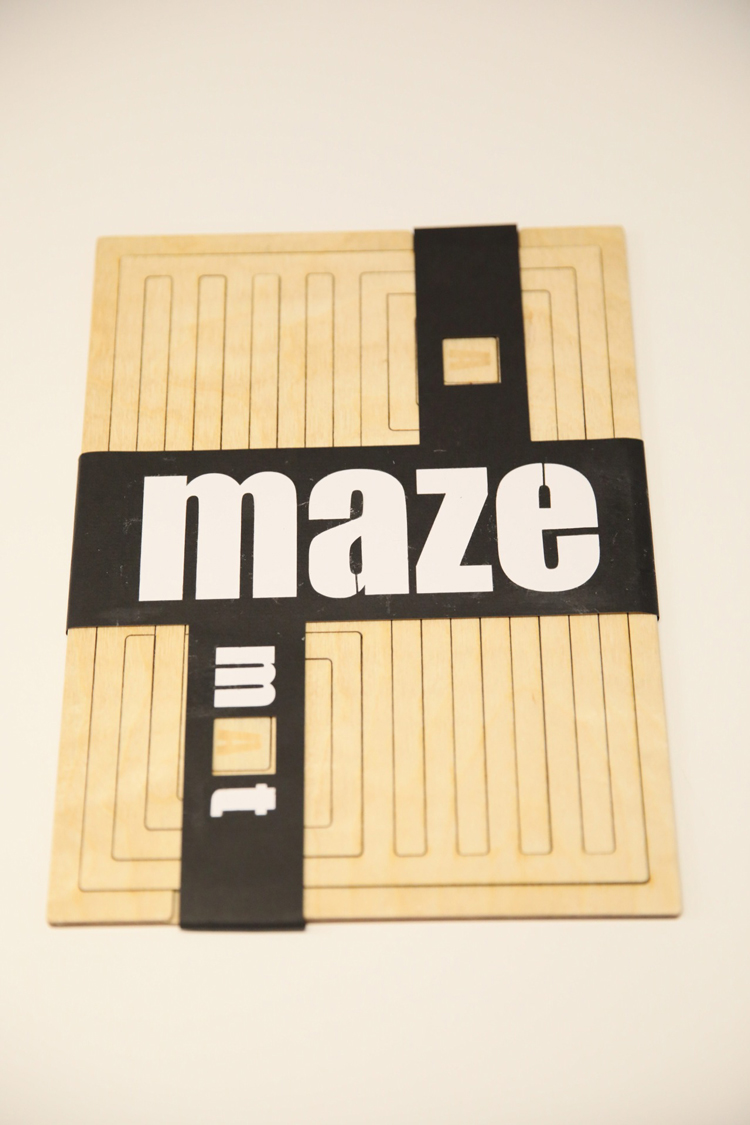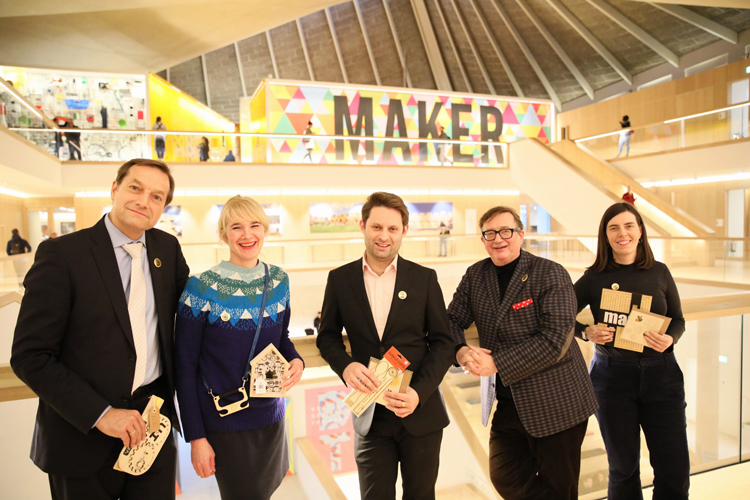“Design is not making something that looks pretty”
The Design Museum has announced the finalists of its annual Design Ventura scheme, which gets teenagers aged 13-16 across the UK to pitch ideas for new products, one of which will be fully developed and go on sale in the museum shop for charity. We speak to product designer and head of the judging panel, Sebastian Conran, about how the initiative aims to teach young people how to communicate, problem-solve and be conscious of the environment.
By Sarah Dawood
A looped bookmark that doesn’t fall out of the book you’re reading; a convertible door sign to tell people if you’re in or out; a more physical version of the card game Snap to keep kids active; these are just some of the ingenious small products created by teenagers aged 13 to 16 as part of the Design Museum’s Design Ventura project.
Design Ventura, which has been running for eight years, invites schools from across the UK to enter teams of four to eight students into the competition, who want to learn how to design, market and sell a new product. So far, it has seen 62,000 students take part in the scheme.
This year, 270 schools entered the competition, and now the Design Museum’s judging panel, led by product and industrial designer Sebastian Conran, has compiled a shortlist of 10 teams and product concepts.
One winning team will be announced in February, who will work with design professionals to develop their product and launch it for sale in the Design Museum shop for £10, with all profits going to a charity of the school’s choice.
This year’s 10 shortlisted designs are varied, but the £10 budget places limitations on the size and scope of the product.
They include: BeeKind, a colourful card with a step-by-step guide on reviving exhausted bees; Buttonmark, a bookmark that loops through a book and buttons up at the front; Bamspark, a foldable bamboo spoon and fork for use on-the-go; Clever Cogs, a changeable door sign that lets people know if someone is in or out of their room; SquareStand, a wooden flatpack stand that allows you to prop up a book, phone or tablet; Photo Feet, a set of feet with London-themed designs to hold birthday cards and photos; Hold ‘Em, a shopping bag holder with a strap that helps people carry multiple shopping bags; Hit Snap, a version of the card game where the players must perform the exercise on the cards when they match; Family Stuff Fund, a money box in the shape of a house to help children learn about saving money; and Maze Mat, a wooden placemat made of interlocking sections that can be pushed out to form two coasters and two placemats.
While this is a charity project, fundamentally it intends to give school kids insight into the real-life process of inventing something from scratch, says Conran.
Schools can enter as many teams as they like, and within the teams, students take on different roles, as they would in a design studio – they put together a business plan, look at strategy, financial considerations and budgets, manufacturing, and complete the marketing, branding and graphics for the new product, alongside designing the prototype. The Design Museum gives each student a pack on how to fulfil their roles, offering them insight into how that job works in the real world.
When they have completed the design process of their products, the teams then pitch their ideas as part of a presentation to the judging panel, like entrepreneurs would to investors.
Every year, the brief for the project is the same – to create a “well-designed product that improves everyday life” and can be priced at £10. They are asked to focus on one of three audiences: adult design enthusiasts, young people and students, or families.
They are also asked to consider sustainability and the environment, how their product will complement others on sale in the Museum shop, the ease of the manufacturing process and the budget.
Conran says Design Ventura aims to teach young people and their schools that good design is fundamentally useful and functional, not just “something that looks pretty”.
“The visual appeal is important because it draws the customer to the product, and we all want nice things in our homes,” he says. “But there’s also its functional behaviour – does form follow fabrication? Does its branding fit well with the Design Museum brand? Is it good value for the customer and does it offer a satisfying experience? Is it a useful object that is designed to last, or is it just something silly? These are all important things to consider.”
By asking the students to think about everything from budgets to marketing to presenting their work to potential investors, Conran adds that the scheme aims to help young people develop “problem-solving skills”, as well as encourage their “creative thinking”.
“Designing is about using your imagination, and that’s something that kids have in abundance,” he says. “But we’re also getting kids to engage in decision-making, and use their imagination to think creatively about problems.”
While the scheme is open to all schools, whether state or private, only state schools can win the competition, Conran says. However, all schools are given the same professional mentoring and teaching in the lead-up.
“This is about helping to make young people self-sustainable,” says Conran. “Design and technology is the realest of all subjects taught at schools – everything in life is about creative problem-solving. If you learnt how to change a plug in D&T at school, you won’t need to call a builder to do a simple job when you’re an adult.”
Since the competition began in 2011, Conran says he has seen students take more consideration of sustainability and the environment, opting for laser-cut wooden products over plastic in recent years, and has also noticed an improvement in confidence and presentation skills. Every year, the Design Ventura product sells out in the Design Museum shop, Conran says, showing the impact of the project.
“The quality has improved dramatically over the years,” Conran says. “Students have become more conscious of technical equipment, like laser cutters and chemistry labs, more thoughtful of nature, and have questioned more about how they could improve existing products. The scheme is developing tremendously and becoming more and more successful.”
This year’s judging panel led by Conran included design, business and entrepreneurial professionals, such as Heather Corcoran, outreach lead at Kickstarter, Duncan Sanders, head of trading at the Design Museum, Christoph Woermann, head of marketing global transaction banking at Deutsche Bank, and Donna Wilson, a Scottish textile designer.
Design Ventura was launched in 2011, run by the Design Museum in partnership with Deutsche Bank’s youth engagement programme, Born to Be, in a bid to develop young people’s design, enterprise and employability skills.
The winner of Design Ventura 2018-2019 will be announced at a special event at the Design Museum in February. See the full shortlist here, and find out more about Design Ventura here.
Ref: www.designweek.co.uk






